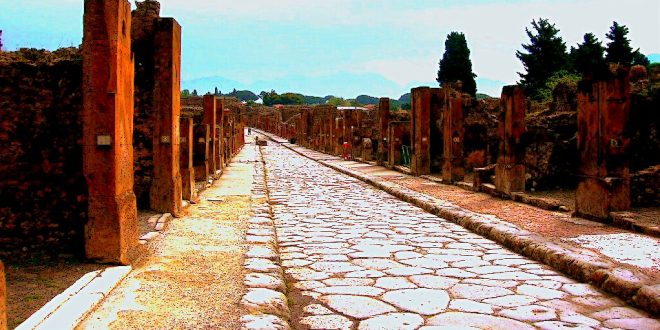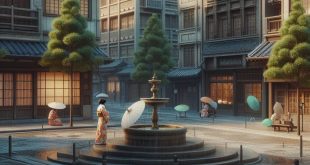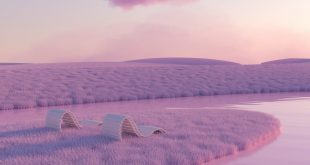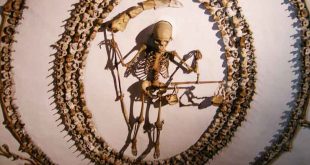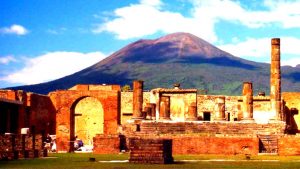 Six new homes – recently reopened, all together – they offer a whole an extraordinary visual landscape over the life of this Roman city, in the years that preceded the eruption of Vesuvius (in 79 AD). All persons entering the places of archaeological excavations of Pompei, http://www.pompeiisites.org/index.jsp?idProgetto=2 have the opportunity to choose between two paths: the first opportunity is the one dedicated to the domus that the houses), the second allows to visit the amphitheater and the exhibition of casts (set inside a large pyramid). You find neat rows of people in front of Paquius Proculus house (the one with the beautiful and colorful, with electoral written floors on the facade).
Six new homes – recently reopened, all together – they offer a whole an extraordinary visual landscape over the life of this Roman city, in the years that preceded the eruption of Vesuvius (in 79 AD). All persons entering the places of archaeological excavations of Pompei, http://www.pompeiisites.org/index.jsp?idProgetto=2 have the opportunity to choose between two paths: the first opportunity is the one dedicated to the domus that the houses), the second allows to visit the amphitheater and the exhibition of casts (set inside a large pyramid). You find neat rows of people in front of Paquius Proculus house (the one with the beautiful and colorful, with electoral written floors on the facade).
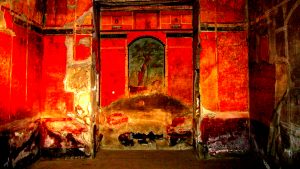 What you see, it just seems to happen yesterday. http://www.pompeiisites.org/Sezione.jsp?titolo=Archeological+sites&idSezione=6788 Environments before your eyes tell the life of the people, even the most wealthy and privileged as the owner of Efebo’s Domus. He bought a lot of contiguous houses, creating large urban house. Most of the houses offers simple views, where ordinary people lived, (like the houses of Sacerdos or that of Fabius Amandius, small and modest, but decorated with refinement. Do not forget to watch the house of the Cryptoporticus, with rooms decorated with scenes of the Iliad. Get ready to find a lot of people, especially in the house of Stephanus, (the man who had a laboratory for washing and painting of tissues).
What you see, it just seems to happen yesterday. http://www.pompeiisites.org/Sezione.jsp?titolo=Archeological+sites&idSezione=6788 Environments before your eyes tell the life of the people, even the most wealthy and privileged as the owner of Efebo’s Domus. He bought a lot of contiguous houses, creating large urban house. Most of the houses offers simple views, where ordinary people lived, (like the houses of Sacerdos or that of Fabius Amandius, small and modest, but decorated with refinement. Do not forget to watch the house of the Cryptoporticus, with rooms decorated with scenes of the Iliad. Get ready to find a lot of people, especially in the house of Stephanus, (the man who had a laboratory for washing and painting of tissues).
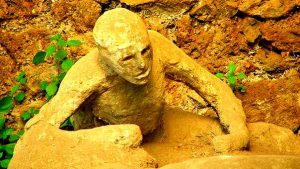 The Fullonica – brought to the surface shortly before the First World War – was one of the most important laboratories for washing and processing of tissue. The structure had large masonry basins for rinsing, powered by an uninterrupted flow of water. Upstairs there were large terraces, where the fabrics were dried and treated and a press, that was ironing the fabric and making it brilliant. The rooms were decorated with beautiful paintings, because Stephanus was an important man. He could also influence political elections, flaunting wealth, at the pursuit of power.
The Fullonica – brought to the surface shortly before the First World War – was one of the most important laboratories for washing and processing of tissue. The structure had large masonry basins for rinsing, powered by an uninterrupted flow of water. Upstairs there were large terraces, where the fabrics were dried and treated and a press, that was ironing the fabric and making it brilliant. The rooms were decorated with beautiful paintings, because Stephanus was an important man. He could also influence political elections, flaunting wealth, at the pursuit of power.
In the house of the baker Proculus, (his portrait and portrait of his wife is exposed to Napoli, the National Archeological Museum), he had wanted floor with sensational mosaics, together with a lounge and a peristyle with painted walls. See: http://www.museoarcheologiconapoli.it/en/
 Meeting Benches World art in all forms
Meeting Benches World art in all forms
